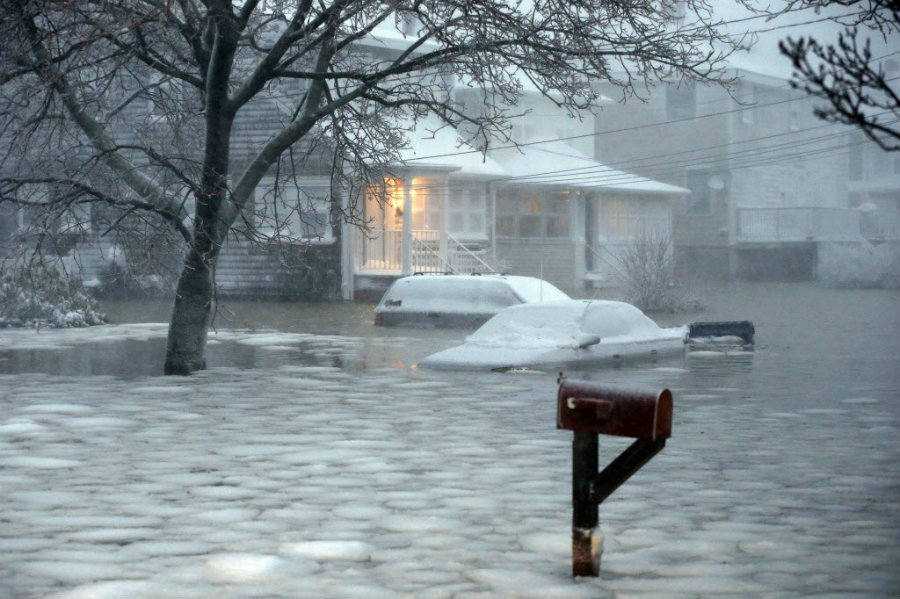So does this huge blizzard disprove climate change?
Loading...
As the first major snowstorm of 2015 bears down on the Northeast, many pundits have taken the opportunity to mock the idea that humans are changing the climate. After all, it's very difficult to think "global warming" when your car is buried in snow.
But nature works in subtle ways and counterintuitive as it may seem, higher surface temperatures do, according to our current scientific understanding, predict extreme precipitation events – blizzards included. A warmer world, it seems, is also a wetter world.
This phenomenon is described by the Clausius-Claperyon equation, which states that warmer atmospheric temperatures mean that the air can hold more water vapor.
Climate change “has contributed to higher amounts of moisture in the atmosphere, which can cause heavier snowfalls,” meteorologist Robert Mera said in a statement for the Union of Concerned Scientists, a research group based in Cambridge, Mass. “It’s also responsible, at least in part, for a much warmer Gulf Stream – over 7 degrees Fahrenheit warmer than average for this time of year – which is adding fuel to the storm.”
According to the US government's 2014 National Climate Assessment, rain and snow falling in the Northeast in the heaviest precipitation events have jumped 71 percent since 1958.
As Michael Bove, a meteorologist with the insurance company Munich Re, points out, "five of the ten largest snowfalls in New York City history have occurred over the past 12 years, despite over 140 years of snowfall data for the city."
Still, all this doesn't necessarily mean that this particular blizzard was caused by, or made more intense by, human activity. Spotting the fingerprints of climate change in the middle of a blizzard is no easy task.
But here's one thing we do know: As the climate continues to change, we can expect more weather like this.






